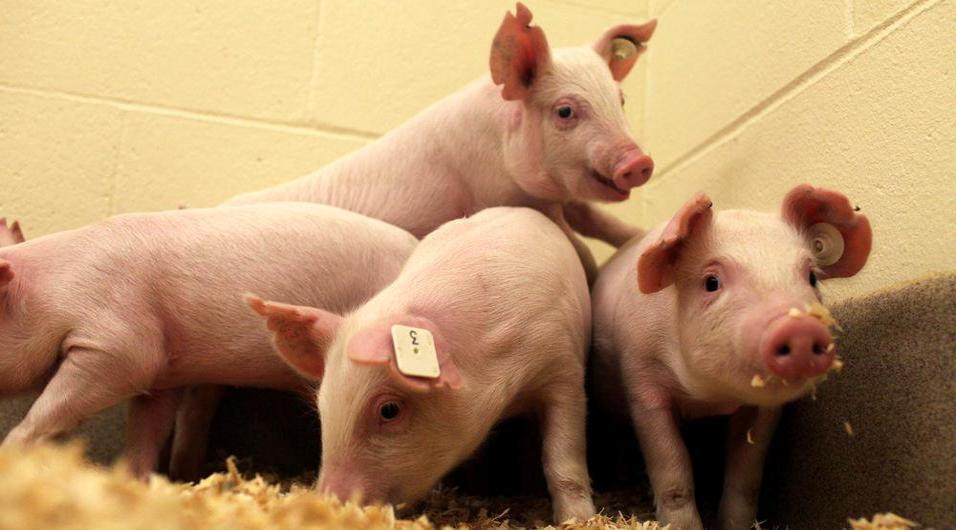
Techniques of Genetic Modification in Animals
CRISPR-Cas9 Technology
The CRISPR-Cas9 technology has emerged as a groundbreaking tool in the field of genetic modification, particularly for generating transgenic animals.
This system is known for its unprecedented efficiency, multiplexability, and ease of use, making it accessible for a wide range of applications. The CRISPR-Cas9 system works by creating sequence-specific double-strand breaks (DSBs) in the DNA, which are recognized by cellular repair mechanisms.
These breaks can be utilized to inactivate or modify genes, allowing precise genetic alterations to be made. Additionally, this technology has the potential to produce different genetic alterations at the same gene loci in various embryonic cells, leading to a variety of genetic outcomes.
Somatic Cell Nuclear Transfer (SCNT)
Somatic Cell Nuclear Transfer (SCNT) is another significant advancement in the realm of genetic modification of animals. This technique has revolutionized livestock genetics by bypassing the need for embryonic stem cells (ESCs).
SCNT involves transferring the nucleus from a fully differentiated cell, such as a fibroblast, into an enucleated egg cell, thereby reprogramming the genetic material to develop into a viable embryo.
This method is not only used to create genetically elite farm animals but also has applications in producing transgenic animals for pharmaceutical protein production [6]. The process of SCNT thus holds immense potential for both agricultural and biomedical purposes, enabling the generation of specific genetic traits in livestock.
Gene Knockout Methods
Gene knockout methods are a widely used genetic engineering technique that involves the targeted removal or inactivation of specific genes within an organism. This approach is crucial for studying gene function and understanding genetic contributions to various biological processes.
However, it is worth noting that about 15 percent of gene knockouts result in developmentally lethal outcomes, meaning the genetically altered embryos are unable to develop into adult organisms.
Despite this limitation, gene targeting techniques allow for the introduction of engineered genetic mutations at specific genomic loci, facilitating detailed genetic studies.
Researchers also employ a reverse genetics approach, where a gene of interest is targeted based on its association with human diseases, further highlighting the versatility and importance of gene knockout methods.
Applications of Genetic Modification in Animals
Enhancing Agricultural Productivity
Enhancing agricultural productivity through genetic modification has revolutionized the farming industry. By manipulating the genetic material of farm animals, scientists have been able to create transgenic livestock that exhibit superior traits such as faster growth rates and improved resistance to diseases.
For instance, transgenic pigs and sheep have been specifically engineered to increase their productivity, which translates into higher yields for farmers.
These advancements offer promising solutions to meet the rising demand for food, especially in the face of global population growth and limited agricultural resources. Moreover, genetically modified livestock can thrive in diverse and challenging environments, ensuring food security in regions prone to adverse climatic conditions.
Medical and Pharmaceutical Research
The realm of medical and pharmaceutical research has significantly benefited from the genetic modification of animals. One prominent application is the development of genetically modified organisms, or "pharm animals," which are engineered to produce pharmaceutical substances in their milk, eggs, or blood.
This innovative approach has the potential to make drugs more accessible and affordable, addressing critical healthcare needs worldwide. Additionally, genetically modified animals are routinely used in drug discovery and development, playing a crucial role in risk assessment and the testing of new treatments.
These animal models, which often mimic human genetic diseases, have emerged as indispensable tools in biomedical research, providing valuable insights that drive scientific progress.
Conservation and Wildlife Management
Genetic modification is also making strides in conservation and wildlife management. By altering the genetics of endangered species, scientists aim to enhance their ability to adapt to changing environments, thereby improving their chances of survival [16]. This targeted genetic intervention strategy is part of a broader conservation effort that includes habitat preservation and effective wildlife management practices.
For example, genetic techniques are employed to understand and reduce the risk of extinction for various species by studying their genetic diversity and implementing strategies to maintain healthy populations. Researchers are increasingly exploring ways to incorporate genetic engineering into conservation initiatives, recognizing its potential to sustain biodiversity and protect vulnerable species.
Ethical and Environmental Concerns
Animal Welfare and Ethical Considerations
The ethical and animal welfare concerns associated with genetic modification of animals are multifaceted and significant. These issues arise at every stage of the animal's life, from the initial genetic engineering process to their eventual use in agriculture or research.
The moral obligation to protect animals is often cited as a core argument against genetic modification, primarily due to the potential for suffering and the disruption of natural behaviors.
For instance, techniques used to increase meat production, such as rapid growth or leaner animals, can lead to severe physiological stress and health problems.
This ethical dilemma is further complicated by differing viewpoints on whether the potential benefits of gene modification, like disease resistance or enhanced productivity, can justify the welfare costs imposed on the animals.
Potential Ecological Impact
The ecological implications of releasing genetically modified animals into the environment are another area of concern. These animals can affect biodiversity, potentially disrupting ecosystems in unforeseen ways.
Experts have evaluated the ecological effects of field-released genetically engineered organisms (GEOs) and found that these impacts can be significant, altering the balance of local flora and fauna.
Moreover, indirect environmental effects could occur through changes in agricultural practices, such as altered feed demands or the number of animals required to sustain production levels.
These changes could lead to cascading effects throughout the ecosystem, emphasizing the need for thorough ecological risk assessments before any widespread implementation of genetically modified animals is considered.
Regulatory and Policy Challenges
Regulatory and policy challenges also present significant hurdles in the adoption of genetically modified animals. Governments worldwide have exhibited reluctance to support the introduction of GM animals into agriculture, largely due to public opposition and scientific uncertainties.
Regulatory frameworks need to address the ethical, environmental, and health implications comprehensively, which is no small feat given the complexity of genetic modification technologies.
Recent trends in the use of GM animals highlight an evolving landscape, but any policy revisions must be preceded by thorough reviews to ensure that all potential risks are mitigated.
Balancing innovation with precaution, regulators face the daunting task of crafting policies that safeguard public interests while fostering scientific progress.
Conclusion on the topic
In conclusion, genetic modification of animals through techniques like CRISPR-Cas9, somatic cell nuclear transfer, and gene knockout methods has opened up a world of possibilities in various fields.
The applications of genetic modification in animals span from enhancing agricultural productivity to advancing medical research and aiding in conservation efforts. However, along with these promising advancements come ethical considerations regarding animal welfare, potential ecological impacts, and the need for stringent regulatory policies.
As we continue to navigate the complexities of genetic modification in animals, it is crucial to strike a balance between innovation and responsibility to ensure that the benefits are maximized while potential risks are mitigated.







